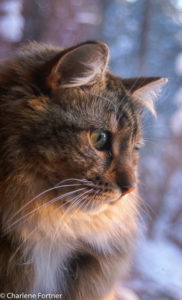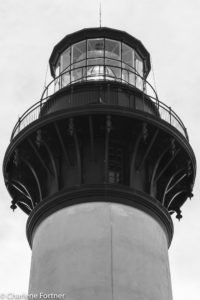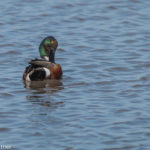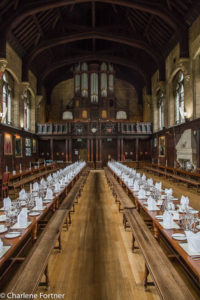Post-processing photos is boring compared to the time spent taking them, in my opinion. Occasionally though, I find myself having fun and learning new tricks. This shot was taken indoors with less than optimal lighting. The tint of the water was a dark greenish-black and the bird’s feathers were a muted gray. Since the Puffin was not in the best lighting, I decided to alter the original photo into a Black-and-White rendering. While using presets in Adobe Lightroom is a great time-saver, I don’t use them for converting black-and-white photos. Using the vibrance and saturation sliders gives me more control over the contrast. In the process of converting this photo the background and the colors of the feathers easily converted while the bright coloring on the beak required stronger measures to convert to Black-and-White. I happened on this half-way version that I really liked.
Monthly Archives: January 2018
Photo of the Day #10
Throughout college, and occasionally now, I took on house-sitting gigs to make some additional cash (and running water!). Many of my “regulars” became my surrogate pets. Almost all of them got along with Tuck. I’ve watched after dogs, cats, horses, birds and even a guinea pig. Many of them became subjects for my photography. One of my favorites was Wiley, who was quite photogenic. Wiley was a rather large cat, larger than Tuck by several inches! His owner’s cabin was a cute loft cabin nestled in the woods. A large bay window in the common room always provided dramatic lighting.
Photo of the Day #9
Photo of the Day #8
Photo of the Day #7
Photo of the Day #6
I had the fortune of observing a small flock of dowitchers very close at the paved pathway out to Fowler’s Beach. For close to 10 minutes I sat down on the pavement and they foraged closer and closer until they were less than 10 feet away. Eventually they spooked, but I was left with some very amazing photos.
Photo of the Day #5
Photo of the Day #4
Balliol College, Oxford, UK
The challenge of travel photography is always how many people do you want in your photos. Planning for sunrise or sunset locations, the direction of light or simply whether a place is open is rather easy compared to dealing with tourists! Patience is the number one photographer’s tool! Sure, knowing your camera, photography techniques and post-processing help make you a better photographer, but the sheer amount of patience needed for dealing with the public….
So, if you’re someone who likes minimal people to be in your shots, there are a few tips I can share:
- Simply wait it out. This is the easiest technique if you have the time on location.
- Visit on off-peak times. Generally, this requires visiting first thing in the morning or staying almost to closing time. The photo above was taken 30 minutes before closing. This method will take some research! I use tools like TripAdvisor to look for suggestions in the reviews. You can keyword search reviews and narrow by the time of year. Words like “crowds” or “busy” would be a good start. Even though this is time consuming, it is a technique that can be utilized before you leave. I’ve learned a few good things about a location using this method. For instance, I learned that most tour bus companies will arrive and leave around set times (usually all companies follow similar schedules) so avoiding those blocks of time if possible will be a good start.
- Learn how to use the cloning, healing, layers and blending tools in Photoshop or similar progam. These techniques require time both in the field and during post-processing. In my opinion, it takes the longest time and if possible, I try to not rely on this technique and revert to patience. (There are a great many step-by-step tutorials available online for the methods of removing people from photos in Photoshop.)
Photo of the Day #3
The Mandarin Duck is native to the Far East, but has been a staple of waterfowl collections. There are several established feral populations, most likely from escapees, in Florida and the west coast. This particular bird was photographed at Sylvan Heights Bird Park, a conservation center in Scotland Neck, NC.
Photo of the Day #2
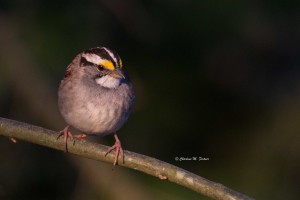
White-throated Sparrow
Greenwood, DE
You cannot beat seeing this species in its breeding plumage.


